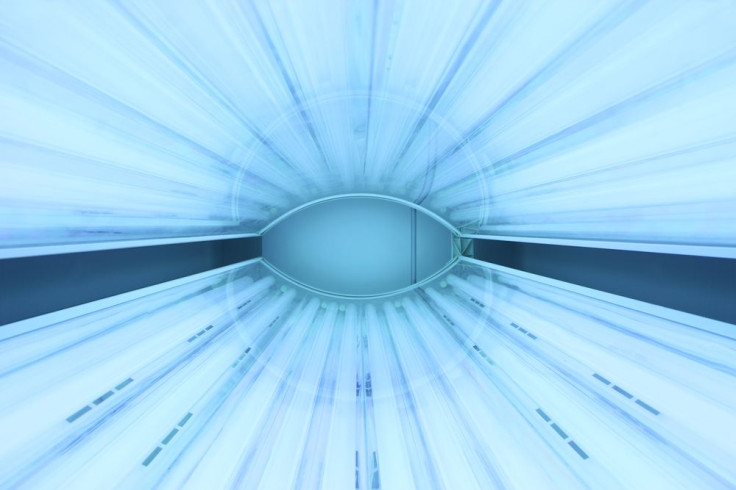Daily Exposure To UVA1 Sunlight Could Accelerate Skin Aging In Just Two Days

Sunlight may age your skin faster than you think. In a new study published by the University of Michigan Medical School, researchers show that certain types of ultraviolet rays may induce cell damage in a matter of days. The findings suggest that even brief exposure warrants sunscreen use.
The study, which is published in JAMA Dermatology, sought to determine how ultraviolet A1 (UVA1) rays influence skin health on the molecular level. Specifically, the researchers wanted to know the amount of UVA1 needed to induce aging, wrinkles, and other cosmetic complications associated with prolonged sunlight exposure. According to lead author Frank Wang, the paper is among the first to look at this particular type of light.
"Premature skin aging from UV exposure has gotten a lot of attention in the last 10 years, but most researchers have focused on UVB rays, which cause sunburn," he said in a press release. "But there is very little UVB in sunlight, and most UVB exposure is at midday. During the rest of the day it's mostly UVA, with UVA1 being the majority. UVA1 is also the main component of tanning booth light.”
To investigate, the researchers enrolled 22 volunteers in an experiment. On three separate occasions, the researchers shone low levels of pure UVA1 rays on a small area of each participant’s buttock. They then took small skin samples to assess the molecular response.
Genetic analysis revealed that after just two exposures, the UVA1 rays began to accelerate the production of molecules responsible for breaking down collagen –– a protein associated with young, firm, and smooth skin. According to Wang, the detrimental effect does not appear to be mitigated after repeated exposure. “We wanted to look at whether it can predispose skin to premature aging by simulating repetitive daily exposure. And we found that it can. Furthermore, the mild tanning that occurs does not seem to protect against damage from additional exposures."
Wang and his team believe that the results illuminate the need for new sunscreen ingredients capable of protecting against this type of ultraviolet light. Aside from zinc and avobenzone, no other substances currently approved by the U.S. Food and Drug Administration filters out UVA1. Since window glass and most types of clothing also fail to protect against the rays, a new type of everyday sunscreen may soon be recommended by dermatologists.
Source: Frank Wang, Noah R. Smith, Bao Anh Patrick Tran, Sewon Kang, John J. Voorhees, Gary J. Fisher. Dermal Damage Promoted by Repeated Low-Level UV-A1 Exposure Despite Tanning Response in Human Skin. JAMA Dermatology, 2013.



























